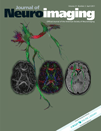Successful Recanalization of a Septic Embolus with a Balloon Mounted Stent after Failed Mechanical Thrombectomy
J Neuroimaging 2011;21:170-172.
ABSTRACT
Cardiac emboli are a feared complication for patients with left ventricular assist devices (LVAD). Septic emboli are rare but carry a poor prognosis in the setting of large artery occlusion. We report the case of a 24-year-old woman who presents with a left internal carotid artery terminus occlusion secondary to a septic emboli from a LVAD. The patient was not a candidate for intravenous thrombolytics due to an elevated international normalized ratio, and thus was taken for intra-arterial treatment. Initial treatment with mechanical thrombectomy and balloon angioplasty was not successful; thus, a balloon-mounted coronary stent was placed to achieve successful recanalization. Fragments of thrombus on the mechanical thrombectomy device revealed gram-positive bacilli on gram stain. Patients with large artery occlusion due to a septic embolus can be successfully treated with endovascular therapies in select patients.




